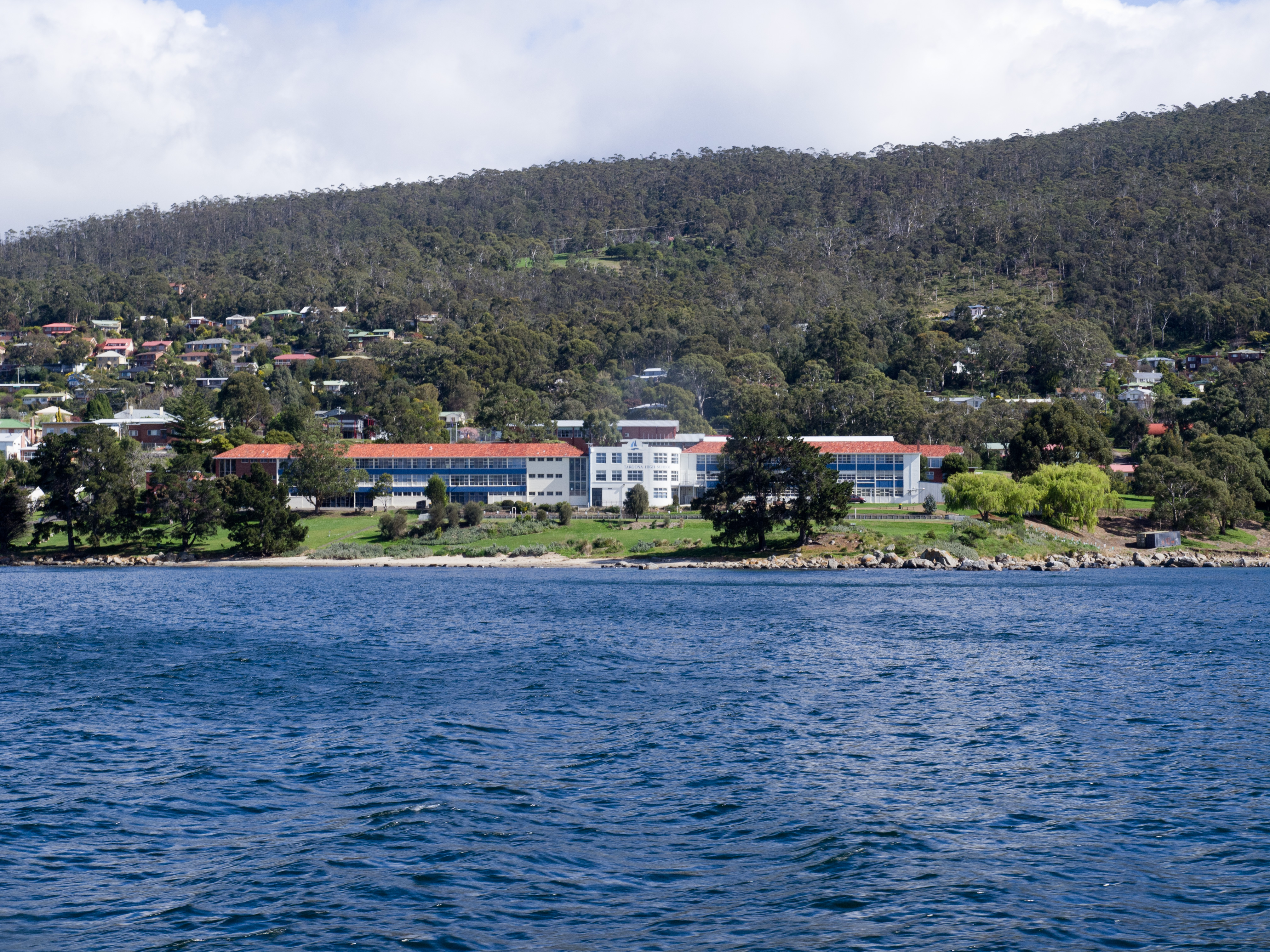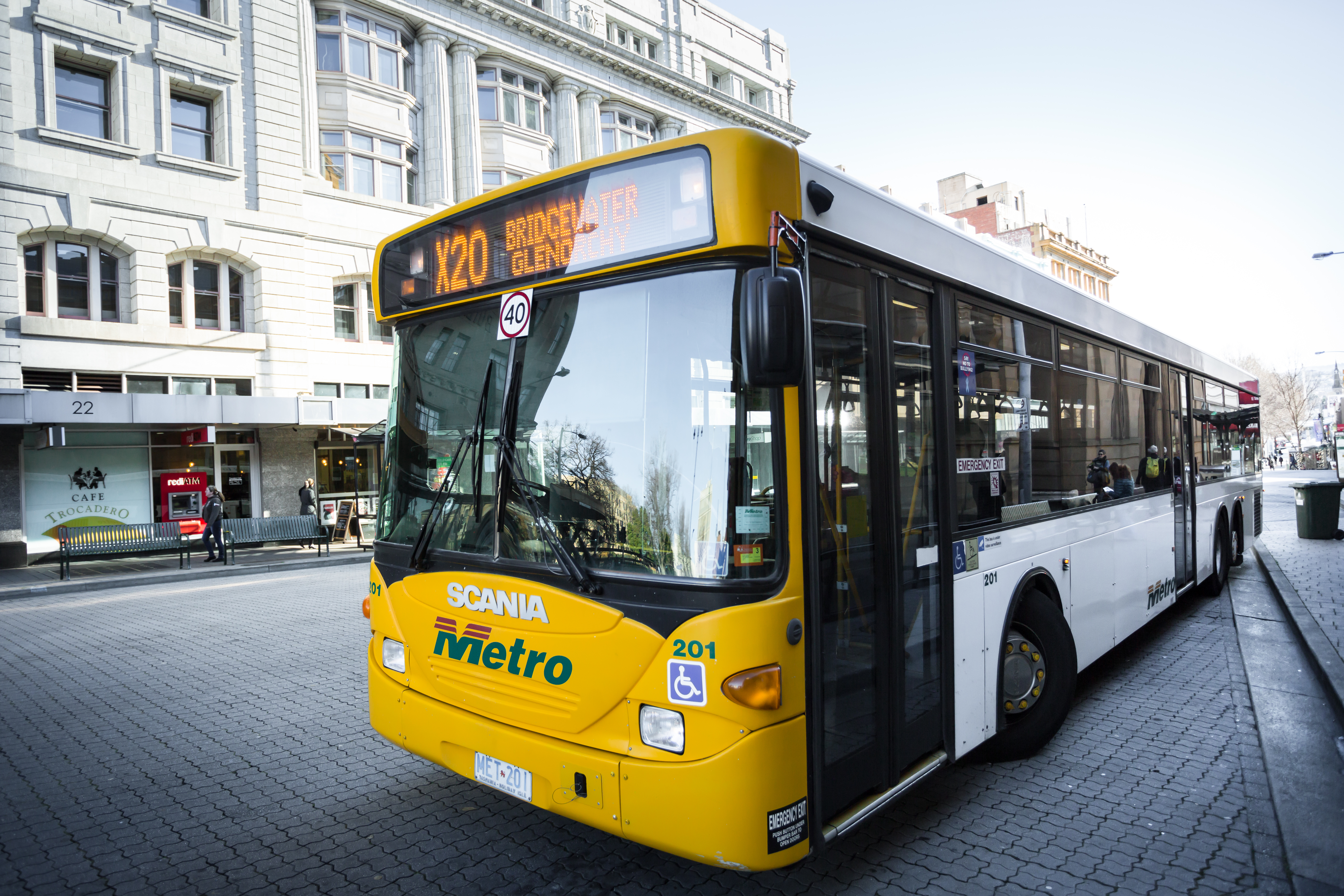|
Hinsby Beach, Tasmania
Hinsby Beach is a beach along the River Derwent in the Hobart suburb of Taroona, Australia. The south facing beach looks directly out to Storm Bay and the Tasman Sea, with views of the Derwent estuary, the Alum Cliffs, Taroona Shot Tower, the City of Clarence on the eastern shore and Opossum Bay, South Arm. Hinsby Beach is situated between the Alum Cliffs and Taroona Beach. A naturally secluded section of the beach, beyond the rocky south-western outcrop is a zoned naturist beach. History Hinsby Beach has historically been a popular staple of local activity, used for exercise, beach combing, kayaking, sailing, snorkelling, bodyboarding and swimming. Prior to the British colonisation of Tasmania, the land had been occupied for possibly as long as 35,000 years by the semi-nomadic Mouheneener people, a sub-group of the Nuennone, or "South-East tribe". Mouheneener shell middens can be found scattered all along Taroona's foreshores. Extreme weather hit the beach in 2018, ca ... [...More Info...] [...Related Items...] OR: [Wikipedia] [Google] [Baidu] |
Taroona, Tasmania
Taroona is a major residential suburb approximately 15 minutes drive from the centre of Hobart, Tasmania on the scenic route between Hobart and Kingston. Although on the edges of the City of Hobart, Taroona is actually part of the municipality of Kingborough. Taroona is bounded on the east by the Derwent River, and has several beaches along the shore, the main beaches with public access are Taroona Beach, Hinsby Beach and Dixons Beach. Past Hinsby Beach, the Alum Cliffs form a section of cliffed coast to the neighbouring suburb of Bonnet Hill. Name The name ''Taroona'' is derived from the Mouheneener word for chiton, a marine mollusc found on rocks in the intertidal regions of the Taroona foreshore. History Traditional owners Prior to the British colonisation of Tasmania, the land had been occupied for possibly as long as 35,000 years by the semi-nomadic Mouheneener people, a sub-group of the Nuennone, or "South-East tribe". Mouheneener shell middens can be found scatte ... [...More Info...] [...Related Items...] OR: [Wikipedia] [Google] [Baidu] |
Beach Combing
Beachcombing is an activity that consists of an individual "combing" (or searching) the beach and the intertidal zone, looking for things of value, interest or utility. A beachcomber is a person who participates in the activity of beachcombing. Despite these general definitions, beachcombing and beachcomber are words with multiple, but related, meanings that have evolved over time. Historical usage The first appearance of the word "beachcombers" in print was in Richard Henry Dana Jr.'s ''Two Years Before the Mast'' (1840) and later referenced in Herman Melville's ''Omoo'' (1847). It described a population of Europeans who lived in South Pacific islands, "combing" the beach and nearby water for flotsam, jetsam, or anything else they could use or trade. When a beachcomber became totally dependent upon coastal fishing for his sustenance, or abandoned his original culture and set of values ("went native"), then the term "beachcomber" was synonymous with a criminal, a drifter, or ... [...More Info...] [...Related Items...] OR: [Wikipedia] [Google] [Baidu] |
Metro Tasmania
Metro Tasmania, commonly called Metro, a Tasmanian Government business enterprise, is the largest bus operator in the state of Tasmania, Australia, with operations in three of the four largest urban centres of Hobart, , and . Urban services in Devonport are provided by a private operator, Merseylink Coaches. Services are provided by Metro under a range of urban and non-urban contracts with the Transport Commission, a division within the Department of State Growth. History The history of Metro Tasmania dates back to 1893, when the '' Hobart Electric Tramway Company'' (HETCo) was founded by a London consortium. The HETCo was one of the earliest such operators in the world, and was the first electric tramway in the Southern Hemisphere. The company also operated two Dennis motorbuses prior to being taken over in 1913 by the Hobart City Council, who renamed it to ''Hobart Municipal Tramways'' (HMT). In 1935, HMT began to use trolleybuses on some networks to replace trams, and petrol ... [...More Info...] [...Related Items...] OR: [Wikipedia] [Google] [Baidu] |
Channel Highway
The Channel Highway is a regional highway that travels south from Hobart To Huonville, Tasmania, Australia. The Channel Highway starts from the end of Sandy Bay Road and travels south toward Huonville via Taroona, Kingston, Huntingfield, Margate, Kettering, Woodbridge and Cygnet. The shortest way from Hobart to Huonville is via the Huon Highway. Prior to the construction of the Southern Outlet the Channel Highway was the main route used to get to Kingston and other southern towns. Kingston Bypass In February 2010, the Tasmanian Government approved the construction of the 2.8 km Kingston Bypass The Kingston Bypass is a 41 million, highway bypassing the southern Hobart community of Kingston, Tasmania. The proposal of a bypass was originally published in the Hobart Area Transportation Study during 1965. The bypass was completed in 2 .... The bypass includes the Summerleas Road underpass, Algona Road roundabout and dedicated cycle lanes. See also * List of H ... [...More Info...] [...Related Items...] OR: [Wikipedia] [Google] [Baidu] |
Kingston Beach, Tasmania
Kingston Beach is a residential locality in the local government area (LGA) of Kingborough in the Hobart LGA region of Tasmania. The locality is about south-east of the town of Kingston. The 2016 census recorded a population of 1990 for the state suburb of Kingston Beach. It is a suburb of the greater Hobart area. It is located on the Derwent River at the mouth of Browns Rivulet. It was originally known as Browns River Beach in the 1850s. Kingston Beach was a regularly photographed location in the twentieth century. The beach is patrolled by Kingston Beach Surf Life Saving Club between the months of December and April. Other facilities include a dog beach, bike park, barbecue area, sailing club, playgrounds and various shops. The local Progress Association served between 1925 and 1992, known as either the Kingston Beach Progress Association, Kingston Beach Regatta Association, or the Kingston Beach Progress and Regatta Association. History Kingston Beach was gazetted a ... [...More Info...] [...Related Items...] OR: [Wikipedia] [Google] [Baidu] |
Pinctada
''Pinctada'' is a genus of saltwater oysters, marine bivalve mollusks in the family Pteriidae. These pearl oysters have a strong inner shell layer composed of nacre, also known as "mother of pearl". Pearl oysters are not closely related to either the edible oysters of family Ostreidae or the freshwater pearl mussels of the families Unionidae and Margaritiferidae. ''Pinctada margaritifera'' and '' P. maxima'' are used for culturing South Sea and Tahitian pearls. They are cultured widely primarily in the central and eastern Indo-Pacific. A pearl oyster can be seen on the reverse side of the 1,000-peso note of the Philippines. Species of commercial value All species within the genus produce pearls. Attempts have been made to harvest pearls commercially from many ''Pinctada'' species. However, the only species that are currently of significant commercial interest are: * Gulf pearl oyster, ''Pinctada radiata''; Persian Gulf, Red Sea, Mediterranean Sea and throughout the Indo- ... [...More Info...] [...Related Items...] OR: [Wikipedia] [Google] [Baidu] |
Australian Broadcasting Corporation
The Australian Broadcasting Corporation (ABC) is the national broadcaster of Australia. It is principally funded by direct grants from the Australian Government and is administered by a government-appointed board. The ABC is a publicly-owned body that is politically independent and fully accountable, with its charter enshrined in legislation, the ''Australian Broadcasting Corporation Act 1983''. ABC Commercial, a profit-making division of the corporation, also helps to generate funding for content provision. The ABC was established as the Australian Broadcasting Commission on 1 July 1932 by an act of federal parliament. It effectively replaced the Australian Broadcasting Company, a private company established in 1924 to provide programming for A-class radio stations. The ABC was given statutory powers that reinforced its independence from the government and enhanced its news-gathering role. Modelled after the British Broadcasting Corporation (BBC), which is funded by a tel ... [...More Info...] [...Related Items...] OR: [Wikipedia] [Google] [Baidu] |
The Mercury (Hobart)
''The'' ''Mercury'' is a daily newspaper, published in Hobart, Tasmania, Australia, by Davies Brothers Pty Ltd (DBL), a subsidiary of News Corp Australia, itself a subsidiary of News Corp. The weekend issues of the paper are called ''Mercury on Saturday '' and ''Sunday Tasmanian''. The current editor of ''The'' ''Mercury'' is Craig Warhurst. History The newspaper was started on 5 July 1854 by George Auber Jones and John Davies. Two months subsequently (13 September 1854) John Davies became the sole owner. It was then published twice weekly and known as the ''Hobarton Mercury''. It rapidly expanded, absorbing its rivals, and became a daily newspaper in 1858 under the lengthy title ''The Hobart Town Daily Mercury''. In 1860 the masthead was reduced to ''The Mercury'' and in 2006 it was further shortened to simply ''Mercury''. With the imminent demise of the ( Launceston) ''Daily Telegraph'', ''The Mercury'', from March 1928, used the opportunity to increase their penetration th ... [...More Info...] [...Related Items...] OR: [Wikipedia] [Google] [Baidu] |
Atlantic Salmon
The Atlantic salmon (''Salmo salar'') is a species of ray-finned fish in the family Salmonidae. It is the third largest of the Salmonidae, behind Siberian taimen and Pacific Chinook salmon, growing up to a meter in length. Atlantic salmon are found in the northern Atlantic Ocean and in rivers that flow into it. Most populations are anadromous, hatching in streams and rivers but moving out to sea as they grow where they mature, after which the adults seasonally move upstream again to spawn. When the mature fish re-enter rivers to spawn, they change in colour and appearance. Some populations of this fish only migrate to large lakes, and are "landlocked", spending their entire lives in freshwater. Such populations are found throughout the range of the species. Unlike Pacific species of salmon, ''S. salar'' is iteroparous, which means it can survive spawning and return to sea to repeat the process again in another year. Such individuals can grow to extremely large sizes, althoug ... [...More Info...] [...Related Items...] OR: [Wikipedia] [Google] [Baidu] |
Middens
A midden (also kitchen midden or shell heap) is an old dump for domestic waste which may consist of animal bone, human excrement, botanical material, mollusc shells, potsherds, lithics (especially debitage), and other artifacts and ecofacts associated with past human occupation. These features provide a useful resource for archaeologists who wish to study the diets and habits of past societies. Middens with damp, anaerobic conditions can even preserve organic remains in deposits as the debris of daily life are tossed on the pile. Each individual toss will contribute a different mix of materials depending upon the activity associated with that particular toss. During the course of deposition sedimentary material is deposited as well. Different mechanisms, from wind and water to animal digs, create a matrix which can also be analysed to provide seasonal and climatic information. In some middens individual dumps of material can be discerned and analysed. Shells A shell mid ... [...More Info...] [...Related Items...] OR: [Wikipedia] [Google] [Baidu] |

.jpg)




